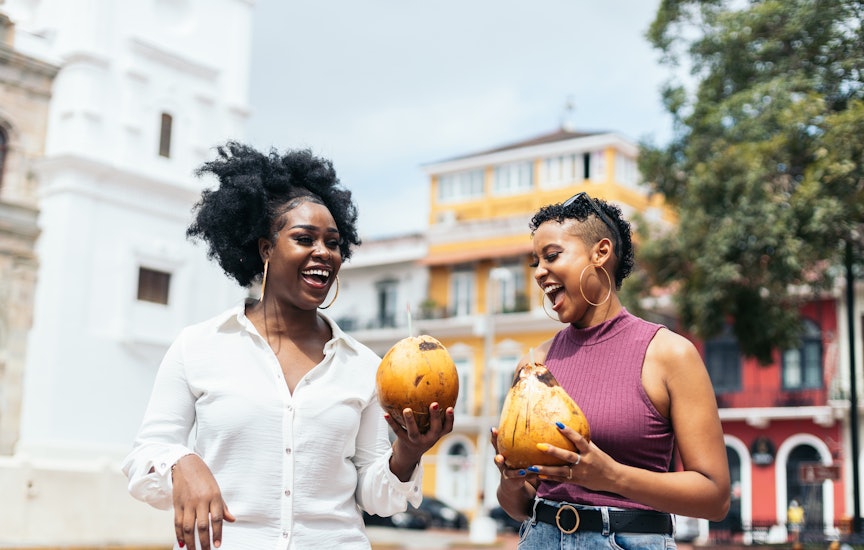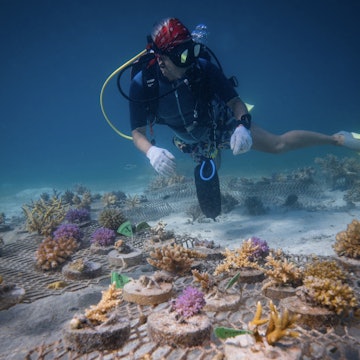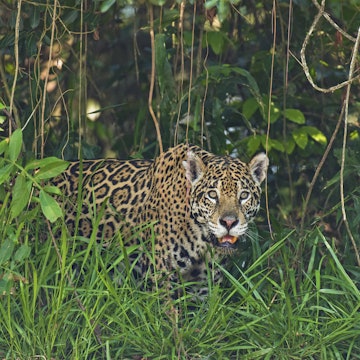

Experience the best of Bolivia as a family with this guide to traveling there with kids © Stephen Lux / Getty Images
From taking a bath in thermal rivers to a fascinating ride on a cable car, Bolivia has plenty of safe and fun attractions for all ages.
Discover breathtaking sceneries and enjoy natural experiences on a family trip where no one is going to get bored. Here's everything you need to know about traveling in Bolivia with kids.
Is Bolivia good for kids?
Bolivia is an off-the-beaten-track country, which means tourist attractions are uncrowded making them ideal for moving around with a larger group.
Formula, baby food and nappies are easy to find in the cities, and most of the hotels have family rooms or can add beds/cradles to the room.
Public facilities are generally limited, but you should find diaper changing stations in airports, some bus stations, and mid- to high-end restaurants.
Squares and public parks are generally accessible in all cities, but most of the streets are not walkable with a stroller. Bring one resistant enough to go cope with potholes and uneven paving, or consider using a baby carrier instead.
Public buses are uncomfortable and usually full, airports and bus stations don’t have a play area, and in small towns, formula and baby food are hard to find. Wherever you go, though, people are kid-friendly and will be willing to help if needed.
Ready to start planning your family trip? Here's our guide to the best time to visit

Where is best in Bolivia for kids?
Bolivia is full of wonderful natural sites that kids will enjoy. For all ages, Aguas Calientes hot springs in the east of Santa Cruz are a top attraction, and Uyuni Salt Flats can be an incredible and memorable experience for kids, especially in the rainy season, when the sky is reflected in the water.
Best things to do in Bolivia with babies and toddlers
Soak in the hot springs in Chiquitania
Aguas Calientes is a small town located 436km (270 miles) east of Santa Cruz. This wonderful spot has a thermal water river that is less than 75cm (2.5ft) deep with a temperature around 38ºC (100ºF).
Toddlers can safely explore tropical nature here while keeping an eye out for little fish. There are hotels with family facilities, such as high chairs, large rooms, and a small play area, and it's best to visit on weekdays when it's less crowded.
Relax in Bolivia's urban parks
Bolivia has several large parks that will keep the kids busy. Spend the day at the playground, take a nap under the shade of a tree or enjoy a family picnic.
Parque Los Mangales in Santa Cruz is one of the most-visited by families and Parque de la Familia in Cochabamba is popular at night with its light shows and dancing waters.
Visit a farm and feed animals
There are few things that little children love more than animals and Bolivia has a couple of farms that welcome families. Ranchito Feliz, a 15-minute drive away from the main plaza in Tarija, will give your kids a marvelous hands-on experience feeding chickens, sheep, rabbits and horses.
Entry costs US$1 should be booked at least one day before.
We can help you choose where to go in Bolivia with our guide to the top places to visit

Best things to do in Bolivia with kids
See life-size dinos at Sucre's Parque Cretácico
Parque Cretácico holds one of the world’s largest collections of fossilized dinosaur footprints and has life-size models of huge dinosaurs that will amaze. Located 5km (3 miles) away from Sucre, hop on the shuttle bus service that runs from the main square every hour.
Explore space at Tarija's observatory
Tarija's Observatorio Astronómico Nacional – the country’s first observatory – is an incredible place where kids get a hands-on learning experience about space exploration and the galaxy.
There’s a large telescope children can peek thorough and a fantastic planetarium. It’s best to call ahead before heading out.
Spend the day in nature at Biocentro Guembé near Santa Cruz
Spend an amazing day in nature at Biocentro Güembé without making a long trip. Approximately a 15-minute drive from the business zone of Santa Cruz, it includes a butterfly sanctuary, an aviary, lagoons and a swamp.
Take a tour with a biologist or roam the grounds at your own pace. End the day at any of the 13 pools on the property or opt for a meal with fresh produce from the surrounding gardens.
Ride the cable car in La Paz
Riding the world’s longest urban cable car network is a popular attraction for children during a visit to La Paz. The thrilling views of the city and the snow-capped mountains in the distance won’t be forgotten.
Some stations have attractions nearby like Mother Earth Park, in Central Station of the Red Line, which has dancing waters and playgrounds, that will allow kids to run around before getting back into the cabin.
Getting around in Bolivia can be a challenge. Here are our top transportation tips

Best things to do in Bolivia with tweens and teenagers
Snap some photos on the Uyuni Salt Flats
Visit the famous Uyuni Salt Flats in the rainy season (December to February) to see the stunning sunset or the night sky reflecting into the water.
Social-media crazed teenagers can spend hours taking Instagrammable photos and vidoes for all their friends.
Local tip: If you have time, it’s a good idea to wait a few days to get acclimatized to the altitude before heading to Bolivia’s top tourist attraction.
Take a walk in Moon Valley near La Paz
Once in the city of La Paz, Valle de la Luna is a must-see attraction. This surreal geological formation similar to the craters of the moon can be explored in two trekking circuits, taking from 15 to 45 minutes, for amazing views.
Located 10km (6 miles) from the center of La Paz, visit with a tour operator or by taking a taxi or bus.
Stay in the tropical wilderness of Amboró National Park
A stay at the Refugio de Los Volcanes, in Amboró National Park, is a fascinating experience for wilderness seekers.
This lodge is in the tropical forest, 68km (42 miles) from the city of Santa Cruz. It has several hiking trails at different levels of difficulty, as well as waterfalls and natural pools.
Go on a journey into the jungle
One on the bucket lists for more adventurous tweens and teens is getting into the heart of the Amazon to admire the exotic species found there.
Departing from the town of Rurrenabaque, you can take a three-day wildlife safari by canoe, where you might spot several species of birds, monkeys, capybaras, snakes, caimans and pink dolphins. Prices vary but expect to pay around US$150 per person per night, including accommodation, food and transportation.
Planning tips
If traveling with children and only one of the parents in Bolivia, you need to carry a permit issued by an Ombudsman’s Office – you'll find at least one in every city, normally located in bus stations – where you have to present identification documents and fill out a form.
The permit is free and valid for multiple trips up to one to three months. It may not be required for all trips, but make sure you have it along with your other travel documents when traveling by plane, as you may not be authorized to board without it. A permit is not required for children traveling with both of their parents.
















